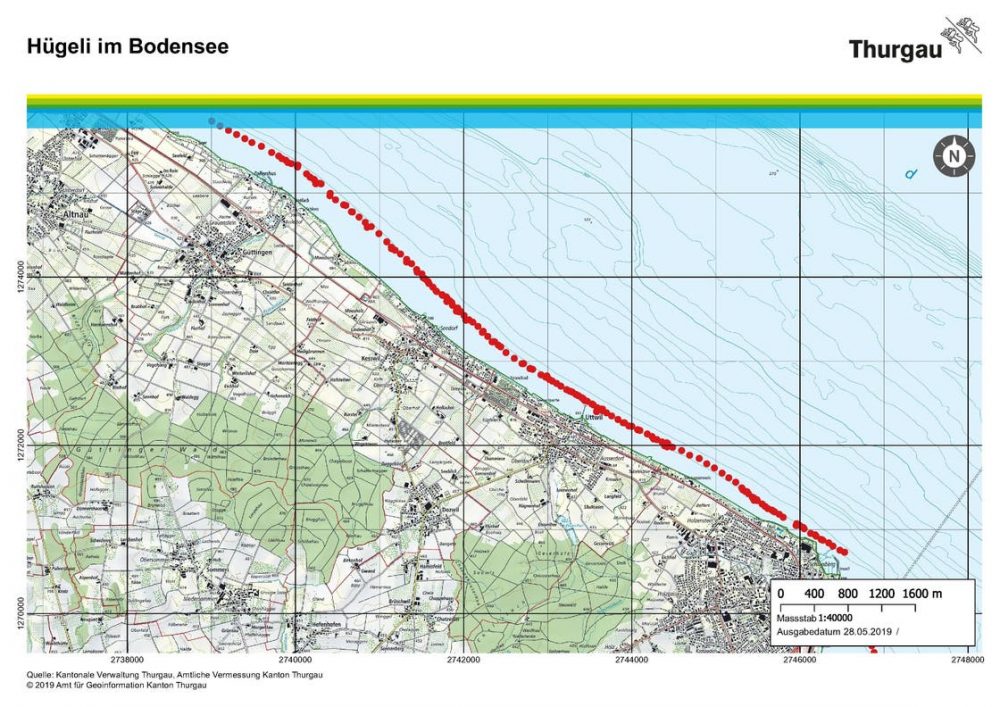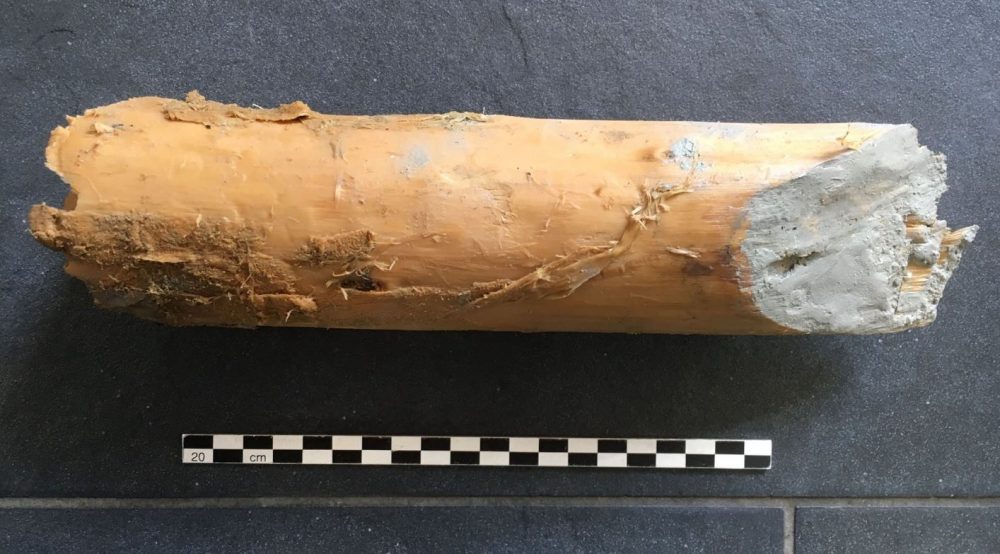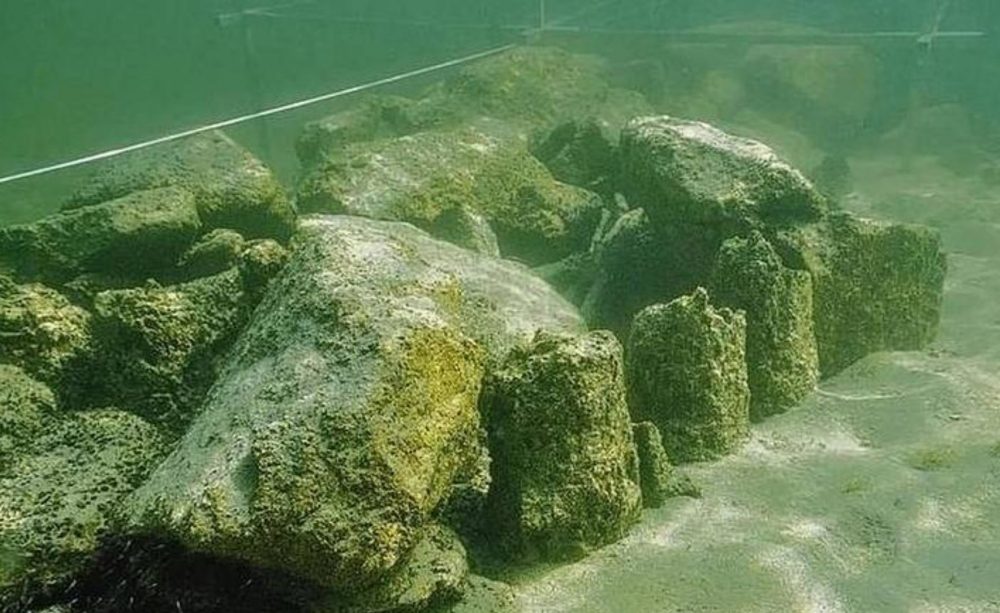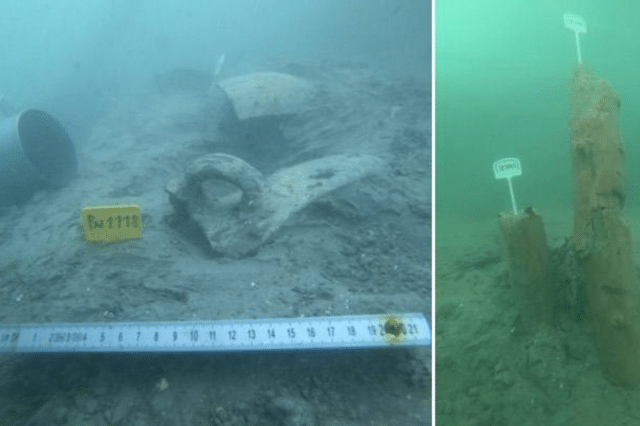170 cairns totaling nearly 17,700 cubic feet—500 cubic meters—of stones were intricately placed by humans more than 5,500 years ago. The exact purpose of the site remains an enigma for experts.
One hundred seventy cairns totaling nearly 17,700 cubic feet—500 cubic meters—of stones were intricately placed by humans more than 5,500 years ago. The exact purpose of the site remains an enigma for experts. Underwater archeologists have confirmed a stumping discovery in a lake in Switzerland: Archeologists claim that an intricate stone formation discovered in 2015 was not made by nature and that the stones–now submerged under Lake Constance– are the result of ancient humans.
Underwater Stonehenge
The cairns were discovered in 2015 during the depth surveys of Lake Constance. For a long time, it was not even clear if they were man-made or might be natural glacier deposits. Since its discovery, the mysterious stone formation was immediately a puzzle for experts. The stones are not visible from above the surface. Puzzling as they are, researchers could not conclude whether they were a natural phenomenon, the results of the last ice age, or man-made fortifications, graves, or temples.
The approximately 170 cairns on the bottom of Lake Constance were first thought to date back no more than 3,000 years. As noted by the archaeologists, the entire site is believed to have 170 cairns totaling nearly 17,700 cubic feet—500 cubic meters— of stones.”

But a recent survey of the site has revealed fascinating details. Not only are the stones the result of ancient humans, but the intricate stone formation also dates back to the Neolithic, more than 5,500 years ago. Lake Constance is situated where Germany, Switzerland, and Austria meet. Its shorelines lie in the German states of Bavaria and Baden-Württemberg, the Swiss cantons of St. Gallen, Thurgau, and Schaffhausen, and the Austrian state of Vorarlberg.
The researchers say the rocks were intricately placed into position by mankind, although previous studies assumed they were a natural formation. As for the age of the “sunken Stonehenge,” the researchers say the rock formation dates back at least 5,500 years, which means the structure predates the Egyptian pyramids by several hundred years.
The elaborate stone formation has been dubbed the Swiss underwater Stonehenge and is submerged beneath the lake at a depth of around five meters. Archeologists have revealed that each series of rocks was placed in regular intervals in a line parallel to the shore of the lake. A spokesman for the Archeology Office of the canton of Turgovia described the finding as “sensational” after underwater investigations were carried out. Previously, a ship equipped with a 15-meter excavator arm was in charge of removing the material around the rocks and was used to reveal the rocks for study.

The archaeologists say that based on the analysis and position of how the rocks were found are indicative of the work of humans and not of nature. In other words, the researchers are convinced the formation is not random and was created thousands of years ago.
Furthermore, using an underwater geo-radar developed by the Technical University of Darmstadt in Germany, the archaeologists could study lake sediments and stone deposits in search of the origin and purpose of these stone works. The Archeological office revealed in a statement that scientists could record the huddle layer of the lake bed near the stone structures by using high-frequency electromagnetic pulses.

The archaeologists have concluded that the stones of around forty centimeters in site res on post-glacial, banded lake deposits and are located clearly above the underlying upper edge of the moraine– a glacially formed accumulation of unconsolidated glacial debris. This allowed experts to conclude that the stone formation is not the result of nature but human hands piling up the stones.
Over the next few months, the Thurgau Archeological Office will complete the documentation of the discoveries and the remaining analysis. An international team of researchers should then evaluate the results and publish them in a scientific publication. What the structures served is still unclear, but archeologists hope to reveal more about the mysterious stone formations through future studies and soul analysis.
Have something to add? Visit Curiosmos on Facebook. Join the discussion in our mobile Telegram group.





